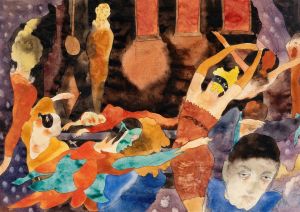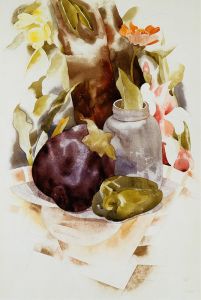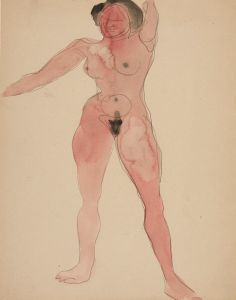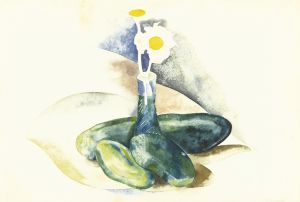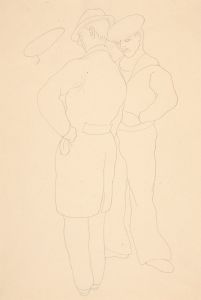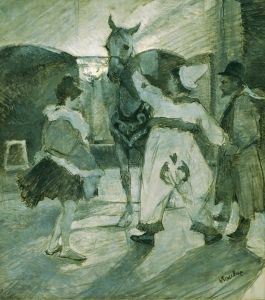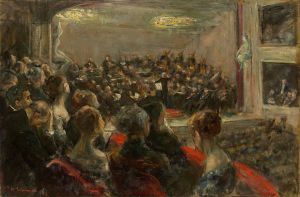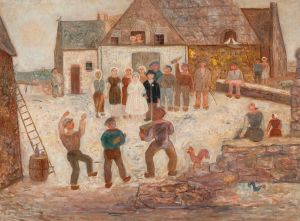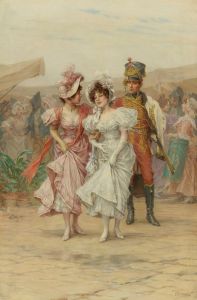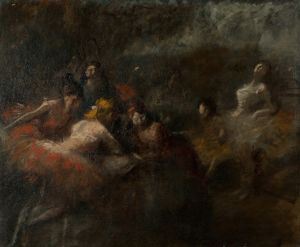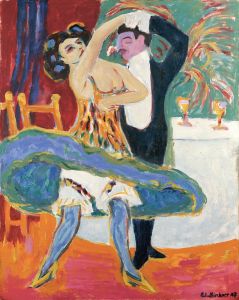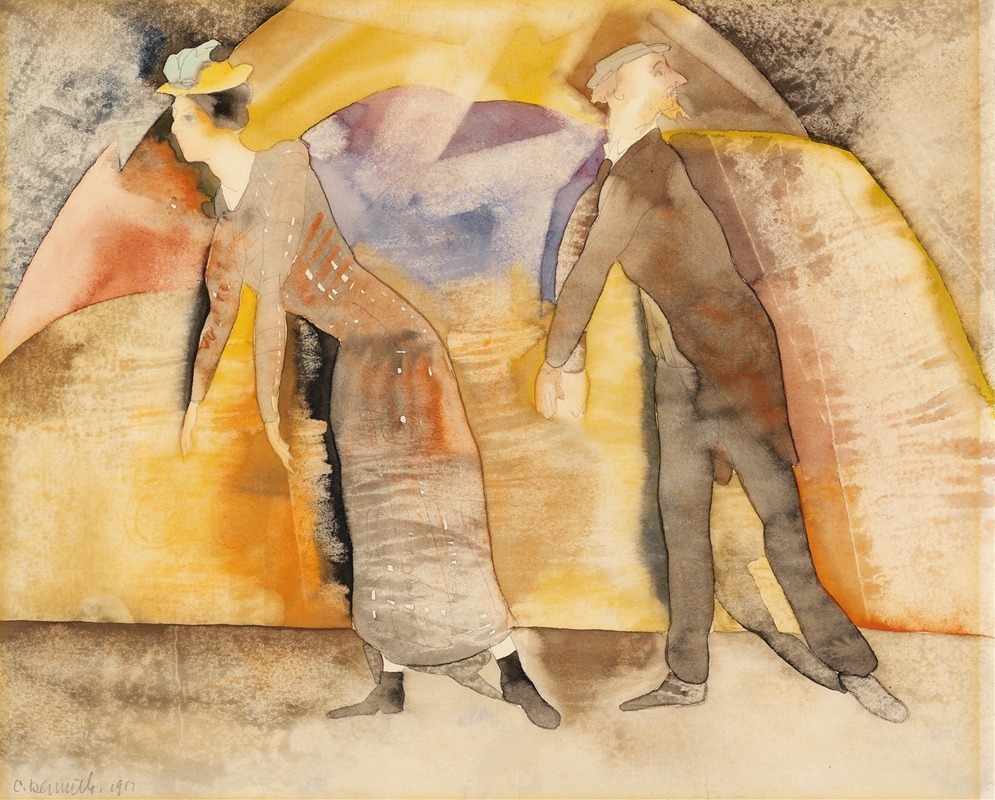
In Vaudeville,Woman and Man on Stage
A hand-painted replica of Charles Demuth’s masterpiece In Vaudeville,Woman and Man on Stage, meticulously crafted by professional artists to capture the true essence of the original. Each piece is created with museum-quality canvas and rare mineral pigments, carefully painted by experienced artists with delicate brushstrokes and rich, layered colors to perfectly recreate the texture of the original artwork. Unlike machine-printed reproductions, this hand-painted version brings the painting to life, infused with the artist’s emotions and skill in every stroke. Whether for personal collection or home decoration, it instantly elevates the artistic atmosphere of any space.
Charles Demuth's painting "In Vaudeville: Woman and Man on Stage" is a notable work that reflects the artist's engagement with modernist themes and his interest in the vibrant cultural life of the early 20th century. Demuth, an American painter associated with the Precisionist movement, is known for his unique style that combines elements of Cubism and Realism. His works often explore the intersection of industrialization and modernity, capturing the essence of American life during his time.
"In Vaudeville: Woman and Man on Stage" was created in 1918, a period when vaudeville was a popular form of entertainment in the United States. Vaudeville shows were variety performances that included a mix of specialty acts such as burlesque, comedy, song, and dance. These performances were a significant part of American popular culture from the late 19th century until the early 1930s. Demuth's painting captures the dynamic and lively atmosphere of a vaudeville performance, focusing on the interaction between a woman and a man on stage.
The painting is characterized by Demuth's use of bold colors and geometric forms, which are hallmarks of his Precisionist style. The figures are depicted with a sense of movement and energy, reflecting the lively nature of vaudeville performances. Demuth's use of sharp lines and angles creates a sense of depth and perspective, drawing the viewer's eye to the central figures on stage. The background is often abstracted, emphasizing the performers and their actions.
Demuth's interest in vaudeville and popular culture is evident in his choice of subject matter. He was known to frequent theaters and was fascinated by the spectacle and diversity of performances offered by vaudeville shows. This painting, like many of his works, reflects his keen observation of contemporary life and his ability to capture the spirit of the times.
"In Vaudeville: Woman and Man on Stage" is also significant for its exploration of gender roles and relationships. The interaction between the male and female figures on stage can be seen as a commentary on the social dynamics of the era. Demuth often explored themes of identity and sexuality in his work, and this painting is no exception. The figures are portrayed with a sense of individuality and presence, highlighting the performative aspects of gender and identity.
Charles Demuth's contribution to American art is significant, and "In Vaudeville: Woman and Man on Stage" is a testament to his innovative approach to painting and his engagement with the cultural currents of his time. The painting is part of the collection at the Philadelphia Museum of Art, where it continues to be appreciated for its artistic and historical value. Through this work, Demuth offers a glimpse into the world of vaudeville and the broader cultural landscape of early 20th-century America, making it an important piece for understanding both the artist and the era in which he lived.





